Hello From NE5DX.
Here are Some Poor Pictures of
Some of my Boatanchors. Better Known
as Junk by a Lot of Folks (and wives).
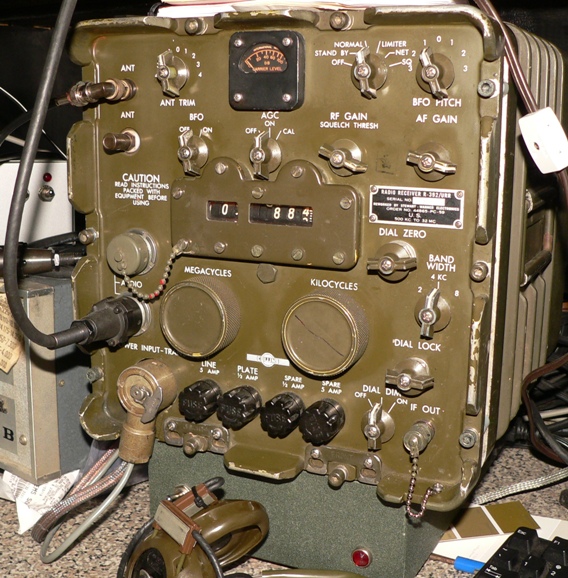
My favorite receiver, a Collins R-392. This is a very early model, first production contract 1951, serial number 15! It's 50 lbs and almost 100% original. It's no telling who may have been present when this one was on the assembly line, possibly on the first day of full production. It could have been built pre-production with that number. It's a beast of tubes and gears and is very sensitive.
Although the majority of the 30,000+ built were by others but licensed by Collins, this one was actually assembled by Collins, who built the first run. That green base houses a 10 amp 28 vdc switching power supply and forced air cooling system for the receiver. Although all tube-type, it does not use a typical high voltage B+ source. The 28 vdc supply powers both the filaments and plates and draws only 3.5 amps or less. For you R-392 folks, look at the Band Width rotary switch. You'll see it's an early version.
-------------
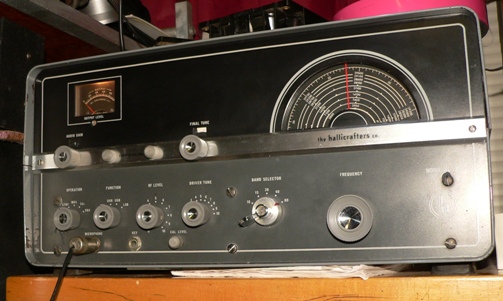
A good "poor boy" AM capable transmitter.. A Hallicrafters HT-37 which is an early 100 watt SSB/DSB/CW carrier balance controlled transmitter. These are easy to operate and very stable transmitters. The 70 lb weight does scare off would-be owners, but other than that, grab one of these up if you're like most of us and have a meager budget but like AM. They are generally priced very reasonble, last one purchased cost $35. The beauty is that the transmitter can have a good AM sound and is solid SSB performer too. It's not true AM, its DBS, but few if anyone can tell the difference, great for a vintage unit. The tuneup procedure is tiny a bit challenging, but if you can read and have the slightest patience, it won't be a problem.
This is a "hidden" jewel for those AM wantabe's. Just do the fairly simple power supply mods and then enjoy... I've never had a bad comment on it's sound. I did change quite a number of tubes out, but that's not necessary needed for every rig. Last one purchased had new tubes and all mods already done.
--------------

A garden variety T-47A/ART-13, known as a "liaison" or long range transmitter used in most big planes during and after WWII. It was only partially restored but was brought up to good working order, all 70 pounds of it. It's a heck-of-a lot of fun to operate and often used. The auto-dial motorized memories still work perfect on it. I prefer 100% working perfect to 100% looking perfect.
The AC power supply hanging on it was built using an "old" handbook design. It's heavy, well built and was installed in a re-purposed P & H Electronics amplifier cabinet. Nothing wrong with the newer power supply designs out there, this one just happened to be built with mecury rectifiers and no solid state devices.
The stamps on the transmitter chassis hints of a long career. It was probably bought as surplus from Kelly AFB TX originally because it went through the base radio shop at least 4 times as noted by the SAAMA stamps on the chassis. Actually many many of these big transmitters went through Kelly AFB if "depot" repairs were necessary. By a stroke of good luck, this one happens to be a genuine Collins. Two more are standing in line for restoration.....Some day!
One very unique feature of this particular ART-13 is the name "Helen" signed in pencil, found on the inside of a panel and dated 08/30/1943. It almost had to be signed during assembly, it's not easily accessible otherwise.
You tend find initials, stamps and pencil markings applied during assembly and testing on most old military gear, but rarely a name.
Although it's a bit hard to see, here's Helen...
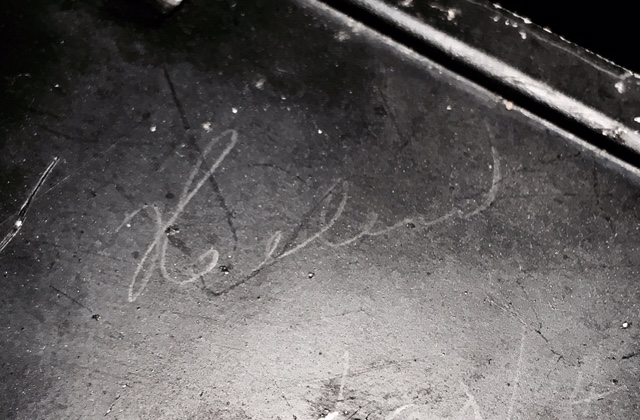 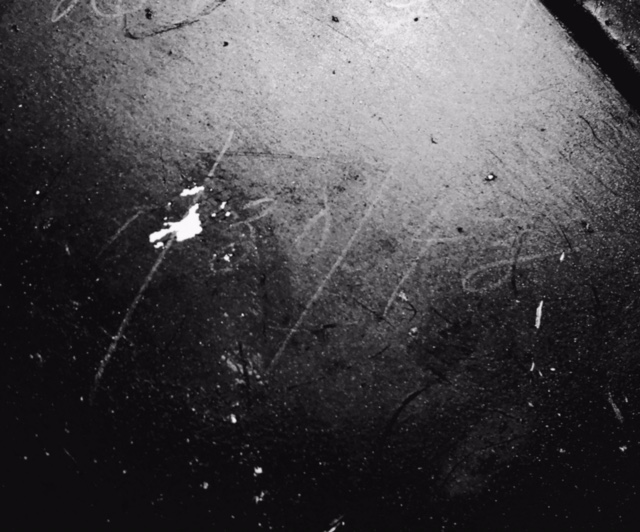
--------------
In the USA, there were over 15 variants of the BC-348 receivers manufactured beginning in 1938 and totalling over 100,000 built. Wells Gardner (BC-348-Q) and Belmont Radio (BC-348-R) were awarded the most orders.
The BC-348 receivers were first used as part of the SCR-260 and the SCR-287 liaison radio sets along with the BC-349 and BC-375 transmitters. And later as part of the AN/ARC-8 liaison radio with the AN/ART-13 transmitting set.
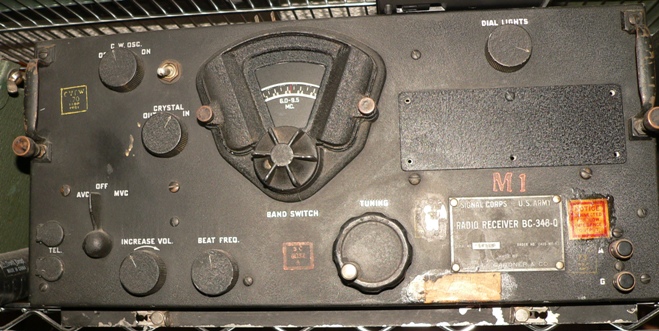
This BC-348-Q is awating a minor touchup and some screws. It still has all original paint and now works well. It has a variety of nice original inspection and information stamps along with a type-written glued-on note in the lower right corner indicating an inspection is due in "November 1957"! It's safe to say it's overdue. This one also went through Kelly AFB because of the SAAMA stamps on it and was quite probably sold as surplus from in and around San Antonio after the war.
It does have one toggle switch added to the front panel. More than likely this will be removed and the resulting hole repaired. Dang shame.....
----------------
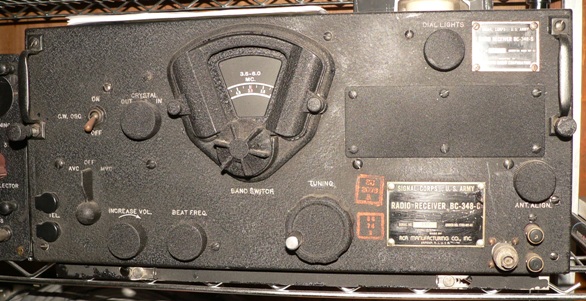
Another good working and clean for it's age BC-348, this time an RCA "C" model factory modified by Belmont in 1942 into an "S" model (that's why 2 tags). It orginally had 4 bands and was modified into the final design of 6 bands. It was manufactured sometime between the middle of 1940 and the end of 1941 then refitted in 1942 according to the ID tags it has. So, the work probably began before WWII and finished during. The serial number is also low, only three digits.
Except for the butcher-job of an added SO-239 and being fitted and an AC power supply, this one is somewhat early (serial #237) and a bit rare and is in very good original condition and would be (or should be) a sin to restore any further, although if a proper dynamotor became available for it, returning it to 28 vcd power would only be the right thing to do.
Luckily the craftsman that installed the homebrew AC supply did it in a way where virutally nothing was changed in the radio itself and the original dynamotor mounting base was used. He used a technique which is my favorite when the original base minus the dynamotor is available. He added a 24v transformer for the filaments rather than rewiring them for 6v and basically changed nothing on the radio itself, even the power switch and power connector was used "as-is". Update; It's now on the bench waiting on a dynamotor to go back on the stripped and restored original base.
-----------------
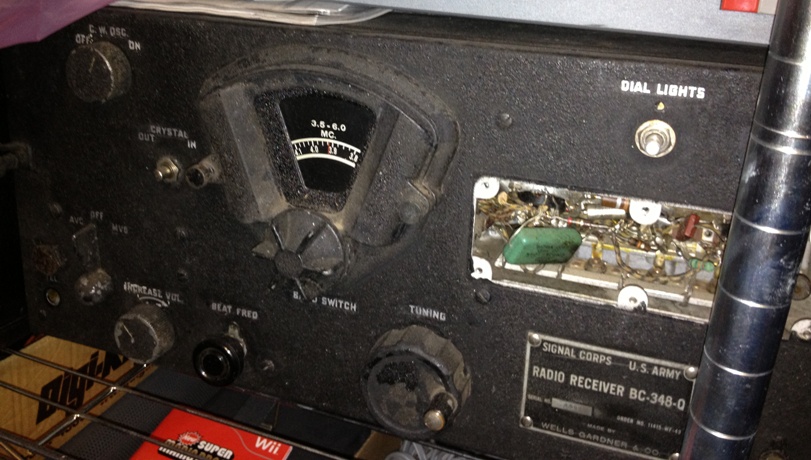
Another shelved BC-348-Q. Absolutely nothing special here, just yet another plentiful Q model. It too is awaiting further minor restoration. Power supply built and installed and receiver work completed. Works very good but needs a better cleanup and touchup, new (to me) knobs have been purchased and will be installed. It did have an "S" meter fitted, but fortunately it was in the right side access panel which needs to be replaced.
This one would probably not have been a candidate for a lot of work since it was bought only as a "parts" rig. Too many "Q" models on the shelf, nothing special or unique here, but the fact the cabinet and front panel hadn't been butchered plus it was a perfect "challenge" on a boring weekend, "made" it a candidate!!! The final result will be a good looking and good working BC-348. Some of us just can't stand to see any military rig like this junked.
----------------
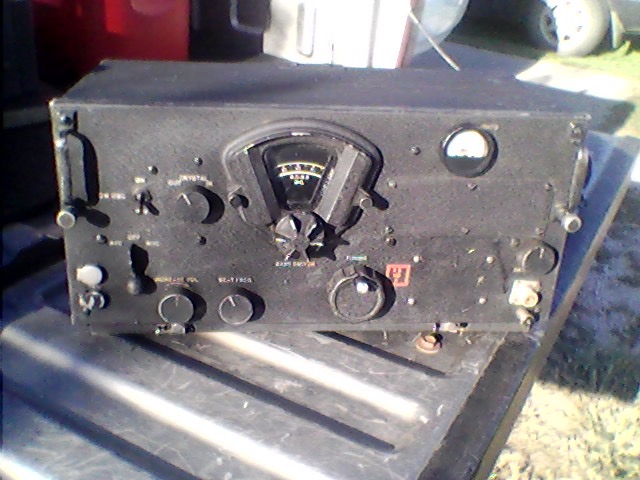
Being a glutten for punishment, here's a BC-224-E fresh from the swapmeet. Notice the NASTY S-meter mounted in the butchered front panel. It's only redeeming qualities were it wasn't butchered (except for that meter and an SO-239 connector), it is a BC-224 plus it had a dynamotor.
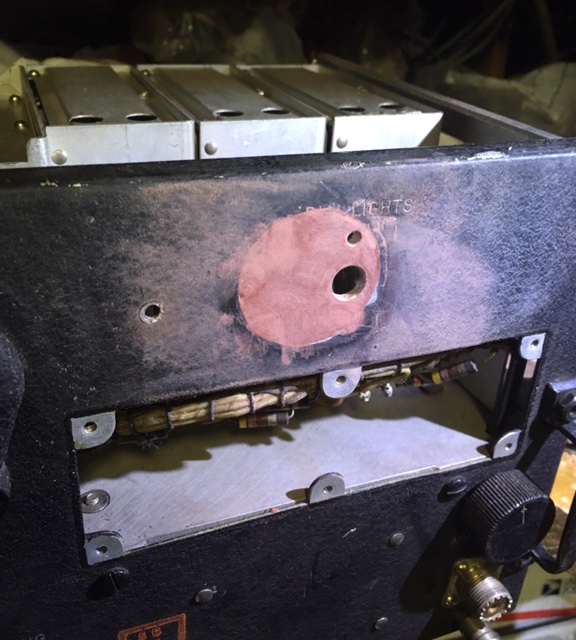
The S-meter was removed and panel patched, the SO-239 damage was about to be repaired, the dynamotor was serviced and a good tune-up was performed.
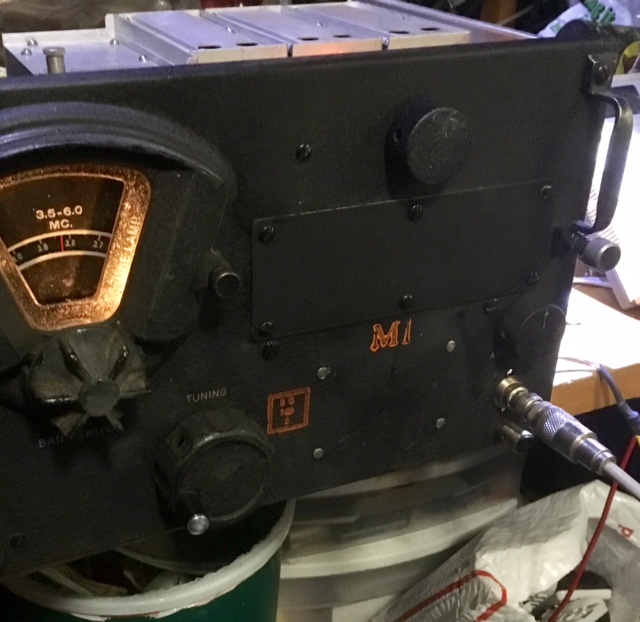
Final assembly prior to touch-up. The nasty SO-239 was replaced with a bolt-in BNC. Since the hole size is the same, it can be restored to original if the future demands it. At this point it's running on 12VDC. The dynamotor is super quiet and there's no hash or trashy noise being added. The tuning is super smooth and the band change switch is in great shape: Not at all what was expected!!
-----------------
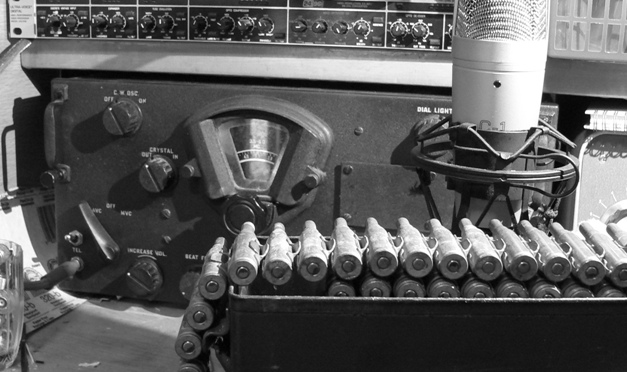
Purchased from the Vintage Radio and Communications Museum in Connecticut. This BC-348-Q once belonged to K1FM who was a technical writer for the ARRL before becoming SK. Restored but knobs were never replaced with originals (so far) and the ID tag is missing. It too had an "S" meter installed, probably in the 1950's, it was removed and the large hole repaired. The Museum was selling off surplus equipment that had been donated to them. Probably an effort to empty the basement and keep the lights on at the same time!
(A perfect replacement front panel (with tag) was recently acquired along with a full set of knobs, all for future installation on another boring weekend.)
-------------
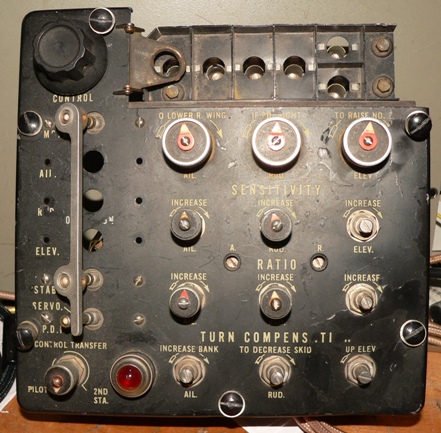
A B-29 artifact. This one is a type-C autopilot control. Not quite complete, it's missing a top panel and some switches, but very unique, never-the-less. It was reported to be surplus to Fifi.
---------------

Also used in B-29's, this is a SA-13U antenna switch generally installed with the ART-13. It was, at times, used to switch between a fixed and a "trailing" antenna, normally for the long-range or "liaison" transmitter and receiver. Not exactly "light duty"!
-----------------
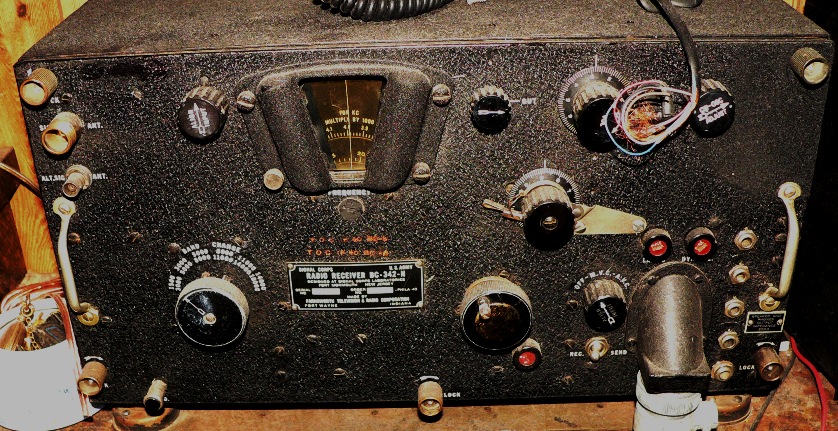
Looks lighweight but weighs a ton, a BC-342-N. This little receiver is a real surprise when you first try and lift it. Aside from being re-capped, it's pretty well original. Virtually no butchery took place on it aside from all "toilet seat" dust caps being removed from it. Tens of thousands WWII receivers and transmitter were bought surplus after the war and many owners attempted to de-militarize them. I guess they wanted to forget the war and make the rigs seem more "civilian" in nature. Not unusual at all.
-------------
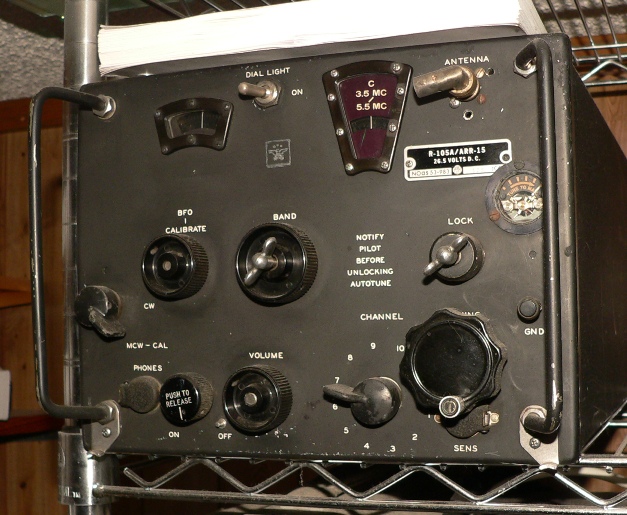
Here's a Collins ARR-105A/ARR-15. It's an airborne HF receiver that was also paired with an ART-13 transmitter at times later on. It's pretty well original except for it's internal power supply. Not restored, obviously, with that "S" meter and antenna connector. The 10 channel motorized "memory" system still works.
It's the military verson of the civilian Collins 51H-3 receiver. It too is on the workbench about to return to 28vdc service with the reinstallation it's original dynamotor (that has been in storage). It will be about 98% original after this is completed. Almost hate to do it since the AC power supply was custom built to fit perfectly inside the receiver without a single new hole drilled or any other physical mods, a pretty good effort was made to preserve the original design completely. The power supply also had a 28vdc source built into it just to operate the auto tune motor. There are a few other mods already performed that will be reversed.
------------------
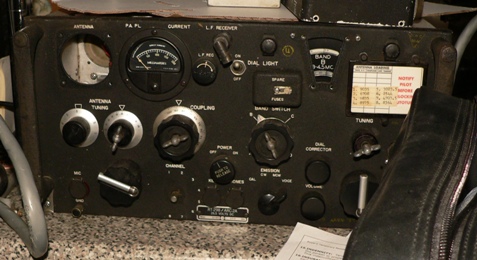
This is a Collins built R-298/ARC-2A and was used in a variety of Naval aircraft. It's a self-contained HF airborne transceiver used through the 1960's and maybe into the 1970's and found in a host of Sikorsky helo's and Navy aircraft including submarine hunters. An external power supply has been added. It was purchased in totally original condition with the original dynamotor. The original military frequencies were still programmed in it which matched the tag still on it with that info. It is AM capable and uses a Collins permeable tuned VFO and has 11 channel motorized auto-tune memory capability. It's designed to change stored freqencies in 6 seconds.
The porcelain antenna connector insulator in the upper left-hand corner had been removed at the time of this picture, however, a 1 to 4 unun was fitted inside and a BNC connector added then reinstalled. Since the insulator is heavy ceramic, a stud mount BNC was used since it was a perfect fit in the existing hole. Remember, this rig was meant to be used with short airborne antennas at maybe a 5 to10 ohm load. The 1 to 4 unun matched it well to a 50 ohm load.
---------------

Anybody read German?... I make out the date as 06 June 1944. The translation mentions something about the "ships that weren't suppose to exist actually do".
----------------
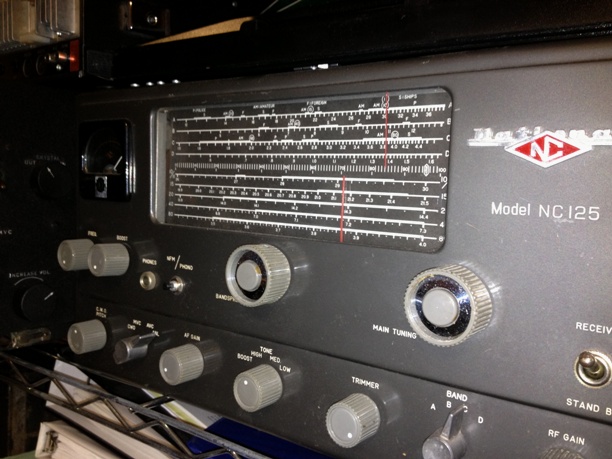
Here's a National NC-125. A VERY good working receiver which was a total surprise and it's in great shape!
-----------------
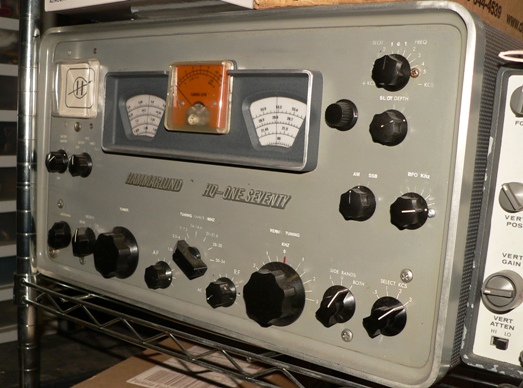
Another heavyweight receiver: A Hammarlund HQ-170 which has a full set of new tubes. It's OK, but not a favorite.
--------------
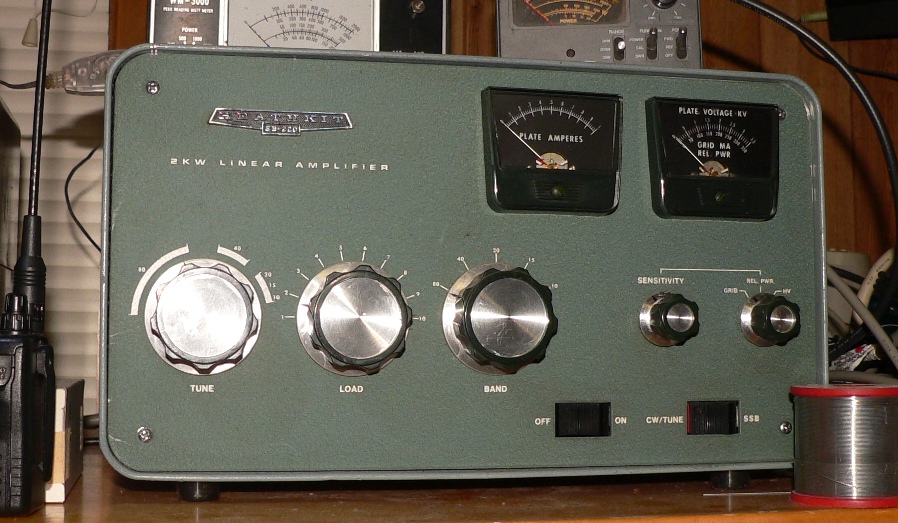
Here's a "psudo-boatanchor", a Heathkit SB-220 that was a trash can "find". Fresh paint and a complete Harbach power supply makeover completes it. With a pair of 3-500z's, the 40 year old full legal amplifier still packs a whallop. It's located in Studio "A" which has all my "vintage" stuff. This is one amp all serious Hams on a conservative budget should consider grabbing up. Given the low output of many of the small affordable military and civilian AM capable transmitters, this old amp can give you a solid 300+ watts out with as little as 30 to 35 watt's in. It doesn't even warm up good at these levels.
--------------
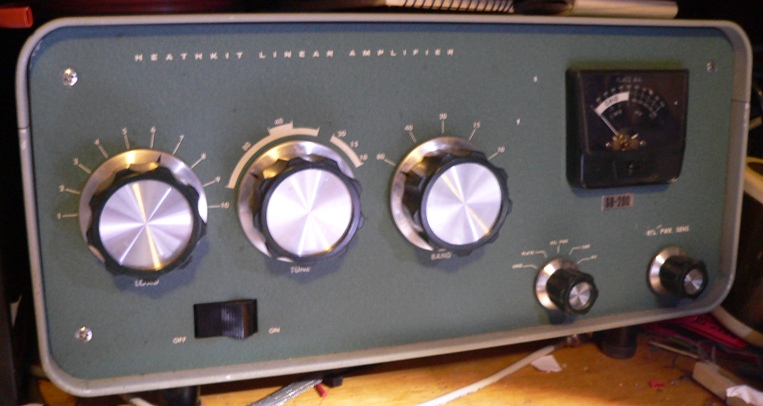
Another Heathkit favorite, the SB-200 amp. This one also has a complete Harbach power supply makeover along with a pair of new-old-stock 1972 dated 572-B tubes. It's used in Studio "B" which is paired up to a choice of 5 different more modern transceivers. For all practical purposes, it's a new amp.
--------------
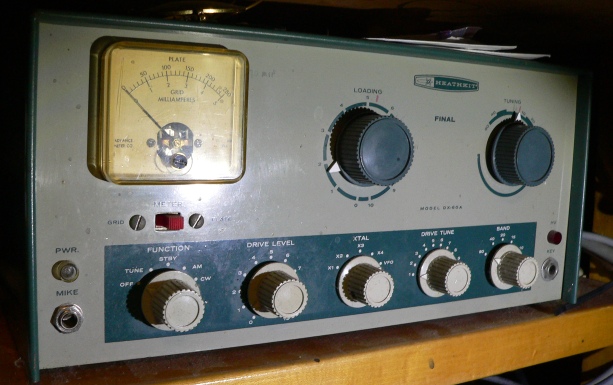
The opposit of "heavy-iron"... The Heathkit DX-60; This one with audio mods. This "mighty-mouse", when matched with the big Heathkit amps, "walks tall"!!
----------------
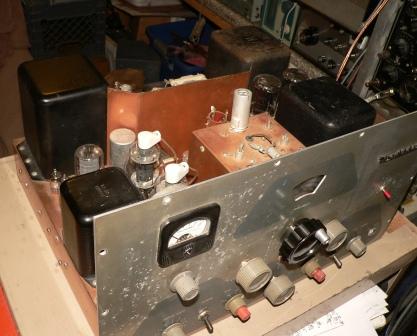
Here's a REAL desktop boatanchor. A 100 watt Heathkit DX-100. I call it the "ugliest DX-100 in the world". It's just too ugly and too heavy to restore, all 100 lbs of it (with cabinet). But it works great and I guess that's all that really counts. It's original although PTT has been added because of the extremely lazy operator. It was a Belton Hamfest purchase and cost less than the fuel cost to go get it. I'm sure the seller didn't want to have to haul it back home. Had I been there by myself, it would NOT have followed me home, too damn old to lift it. "Dirt cheap" is a term that fit this purchase.
The big surprise was the fact it's stable and worked perfect without a single repair. A full set of new tubes were added but honestly nothing was gained except the knowledge of the fact they were new. It's still ugly and since it's still HEAVY, and it's still NOT in it's cabinet. I even found a "B" model case which is lighter, smaller and has a access panel on top, it's still heavy.
---------------
|
|




















